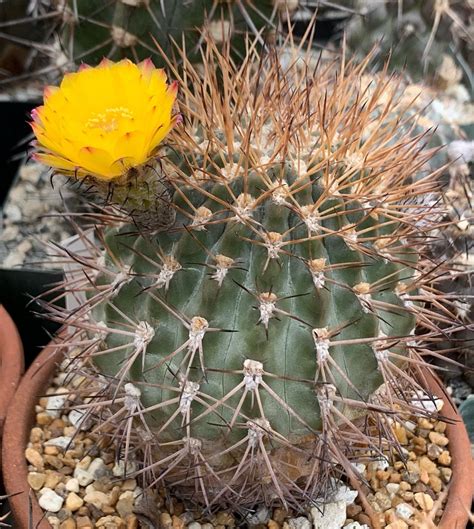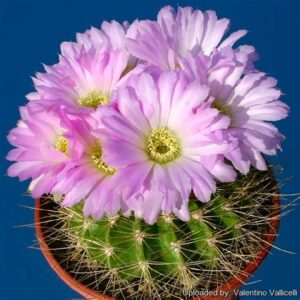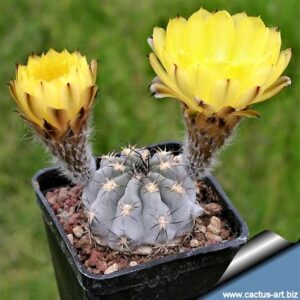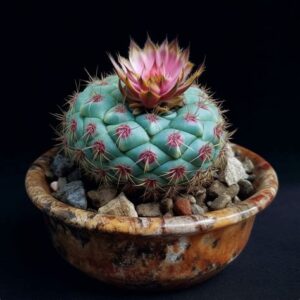Acanthocalycium thionanthum subsp. glaucum, a captivating cultivar within the Acanthocalycium genus, is a succulent that has garnered attention due to its unique ornamental qualities and relatively straightforward care needs. This fleshy stemmed cactus is particularly favored by enthusiasts who appreciate its aesthetic diversity and adaptability to various cultivation environments. In this article, we will delve into the distinctive traits of Acanthocalycium thionanthum subsp. glaucum and provide comprehensive care tips to ensure its thriving growth in both indoor and outdoor settings.
The Acanthocalycium genus, as a whole, comprises fascinating species with vibrant colors and intriguing forms. Acanthocalycium thionanthum subsp. glaucum distinguishes itself with its glaucous, blue-green skin and occasional charming floral displays. Understanding the fundamental requirements for the optimal growth of this cultivar will enhance your experience in cultivating these spectacular cacti.
Before embarking on the journey of caring for Acanthocalycium thionanthum subsp. glaucum, it is prudent to familiarize yourself with its natural habitat and growth patterns. This knowledge lays the groundwork for replicating the environmental conditions that foster its health and vivacity.
Understanding the Natural Habitat
Acanthocalycium thionanthum subsp. glaucum is predominantly native to the arid regions of South America, notably found in the hilly terrains of Argentina. These environments are characterized by well-draining soils, minimal rainfall, and ample exposure to sunlight. In their natural state, these cacti flourish in conditions that provide not only the right amount of light but also protection from excessive moisture and high humidity.
Pondering these environmental factors equips the enthusiast with insight into how best to recreate a suitable habitat for Acanthocalycium thionanthum subsp. glaucum, allowing the plant to exhibit its full potential in terms of growth and flowering.
Choosing the Right Potting Medium
The significance of a well-draining potting medium cannot be overstated when cultivating Acanthocalycium thionanthum subsp. glaucum. These cacti thrive in soils reminiscent of their native habitats—light, gritty, and porous. A standard cactus mix typically suffices, but consider augmenting it with additional perlite or sand to improve drainage.
When selecting a pot for your Acanthocalycium thionanthum subsp. glaucum, ensure that it includes drainage holes at the base. This feature is non-negotiable; without it, any excess water can lead to root rot, a common nemesis among succulent aficionados. Terracotta pots are an excellent choice as they not only facilitate drainage but also provide breathability to the roots, reducing the risk of fungal diseases.
Illumination Requirements
Light is critical for the robust health of Acanthocalycium thionanthum subsp. glaucum. Ideally, this succulent requires full sun exposure for several hours each day. Positioning it near a south-facing window is often ideal for indoor environments. However, be cautious of sudden exposure to intense direct sunlight, especially if the plant has been acclimatized to lower light conditions. This can cause sunburn on the plant’s surface, which is manifested by discolored patches or a general decline in aesthetic integrity.
For outdoor cultivation, ensure that the plant is situated in a location that receives ample sunlight while also considering protection from severe weather elements. A shaded area during extreme mid-day heat can prove beneficial, striking a balance between sunlight exposure and temperature regulation.
Watering: The Delicate Balance
Watering Acanthocalycium thionanthum subsp. glaucum requires a nuanced approach, rooted in the principles of drought tolerance unique to succulents. During the active growing season, typically spring and summer, allow the soil to dry out completely between waterings. A deep soak during this period will encourage profound root development, yet be cautious not to allow the plant to sit in water, as this invites perilous root rot.
In contrast, during the dormant winter months, significantly reduce watering frequencies. A simple rule of thumb is to water the plant sparingly, just enough to prevent the plant from wilting excessively. Overwatering during this period can lead to catastrophic damage, significantly impacting the plant’s vitality.
Temperature and Humidity Considerations
Acanthocalycium thionanthum subsp. glaucum exhibits a high tolerance for temperature fluctuations, thriving in temperatures between 70°F and 100°F (21°C to 37°C). It can withstand brief periods of cooler temperatures, down to 30°F (-1°C), although prolonged exposure to cold conditions can significantly damage the succulent.
Humidity levels should remain low, consistent with its native arid habitats. High humidity can precipitate issues such as root rot and fungal infections. If cultivating in a particularly humid region, consider utilizing a dehumidifier or creating a microclimate with ample airflow to maintain optimal conditions.
Fertilization for Optimized Growth
While Acanthocalycium thionanthum subsp. glaucum does not require excessive fertilization, providing periodic nourishment can greatly enhance its growth and flowering potential. During the growing season, utilize a diluted cactus fertilizer or a balanced, water-soluble fertilizer applied every four to six weeks. This will supplement the essential nutrients and minerals necessary for robust health.
Be mindful not to exceed recommended doses, as this can lead to fertilizer burn, harming the roots. In the dormant winter months, halt fertilization altogether, allowing the plant to rest without additional stressors.
Pest Management
While Acanthocalycium thionanthum subsp. glaucum is not particularly prone to pests, vigilance is essential. Common pests, including mealybugs and spider mites, may infiltrate and jeopardize the plant’s health. Regular inspections of the plant can help catch any infestations early. If pests are detected, isolate the affected plant and treat it with insecticidal soap or neem oil.
Proper sanitation practices in the growing environment, combined with controlled watering habits, can mitigate the risks associated with pest infestations, ensuring longevity and health for your succulent.
Encouraging Flowering and Propagation Techniques
One of the notable features of Acanthocalycium thionanthum subsp. glaucum is its propensity to produce stunning, vibrant blooms. For optimal flowering, ensure that the plant receives adequate light, proper watering and fertile soil conditions. Flowering typically occurs in the late spring to early summer, and providing conditions favorable for flowering may result in a profusion of colorful petals.
Propagation methods for Acanthocalycium thionanthum subsp. glaucum often involve seeds or offsets. Sowing seeds requires a finely prepared soil mix with adequate drainage. Ensure that the soil remains moist but not soggy, as excess moisture can inhibit germination. Alternatively, offsets can be carefully detached from the parent plant and potted independently for new growth.
In conclusion, Acanthocalycium thionanthum subsp. glaucum presents a unique opportunity for cacti enthusiasts to explore the compelling world of succulents. With proper understanding and care—ranging from environmental considerations to watering, light, and pest management—this splendid cactus will undoubtedly thrive, rewarding its caretaker with awe-inspiring beauty and resilience. Whether you are cultivating indoors or outdoors, adhering to these guidelines will set the stage for a flourishing relationship with this distinctive succulent.





Leave a Comment